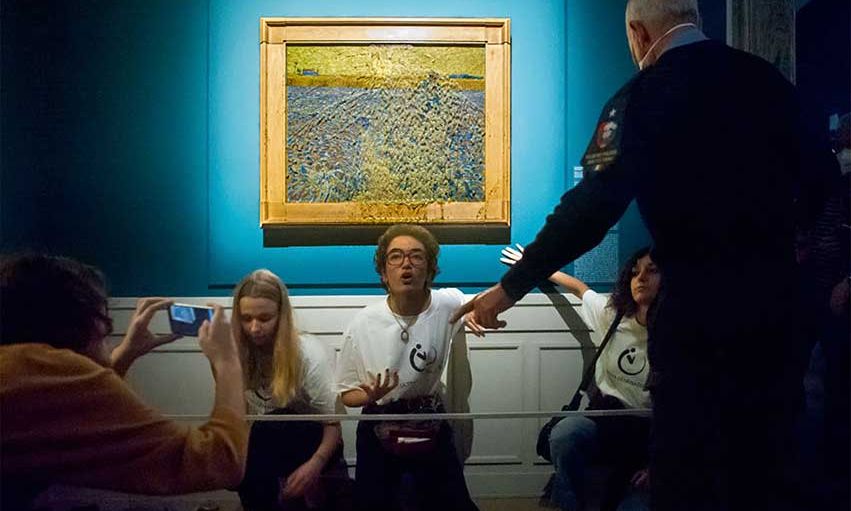Protesters targeting works of art is just one of a growing number of concerns for lenders
Photo: Laura Lezza/Getty Images
For both artists and collectors, getting the art you create or own into museums means both prestige and money. The inclusion of works in a temporary exhibition or permanent collection signifies validation, and the more prominent the museum, the greater the validation.
When a work enters an institution, “you have proof that the piece is museum quality”, says Michael Duffy, the head of art planning at Merrill Lynch, Bank of America. “It has a very positive effect on price history.” He notes that museums do not want to be seen as the “marketing arm of a collector”, but the research on pieces conducted by curators and scholars, which includes checking an object’s provenance, gives confidence to prospective buyers. It is a win-win for both lenders and museums.
However, the closure of museums during the pandemic, which left them maintained and patrolled by skeleton staff, and recent protests at institutions that have specifically targeted works, have made prospective lenders increasingly nervous. According to the New York art lawyer Susan Duke Biederman, “We have entered a new, jagged world,” in which loan agreements between collectors and museums are getting longer and include provisions that cover events that once seemed improbable but are now possible.
“What if everything is closed down and you can’t hire security people?” she asks. “Is security human guards or just cameras? Is the security round-the-clock, and are guards armed? If the work stays in a museum past the end date of the loan agreement, will the insurance pay if damage takes place after that?”
Loan agreements are not new and have always contained pages detailing terms, invitations to openings, how objects will be displayed, how they will be attributed and discussed in the supporting material, who conducts condition reports, any restoration or conservation that might be needed and who performs it, and copyright issues, as well as who pays for packing, transporting, installing and insuring the items. In recognition of how such loans can affect the market, some institutions will add a clause that requires lenders to hold off putting a borrowed work up for sale for a period of years after a show.
Insurance coverage is often the largest focus of concern because of the potential for damage, which is usually unintentional. Often, loan agreements include a force majeure provision that addresses “acts of God” and unforeseen circumstances (pandemics, earthquakes, insect infestations, terrorism and war, among them). On the other hand, for example, climate protesters throwing tomato soup at Van Gogh’s Sunflowers in London’s National Gallery was “definitely unforeseen but falls under the definition of intentional damage”, according to Leila Amineddoleh, a New York art lawyer. That type of circumstance “should be addressed in an agreement”.
Other problems may arise. A museum might go bankrupt, leading creditors to try to seize assets to cover debts (art lenders can apply for priority over other creditors in recovering their objects) or, in the case of long-term loans, forget that an object was on loan and sell it (lawsuits to recover the sale price usually ensue).
Loan agreements seek to head off all potential contingencies but sometimes not everything can be nailed down. In the event that damage occurs, the lender and insurer may disagree as to the extent, and if it can be repaired, leaving a collector to negotiate directly with, or bring a lawsuit against, the insurance company. In the loan agreements that he has negotiated, the lawyer Ralph Lerner has sought to force museums to not step aside in these disputes. “I make it clear that the collector is not lending this artwork to the insurance company but to the museum, so the museum should take care of everything,” he says.
Art adviser Todd Levin generally warns against lending to museums, especially if a piece is old or fragile. As he puts it: “Museums damage things all the time. Collectors often are told that more exposure raises the transactional price for their art, but lending works can have a deleterious effect on the price if there is damage.”

